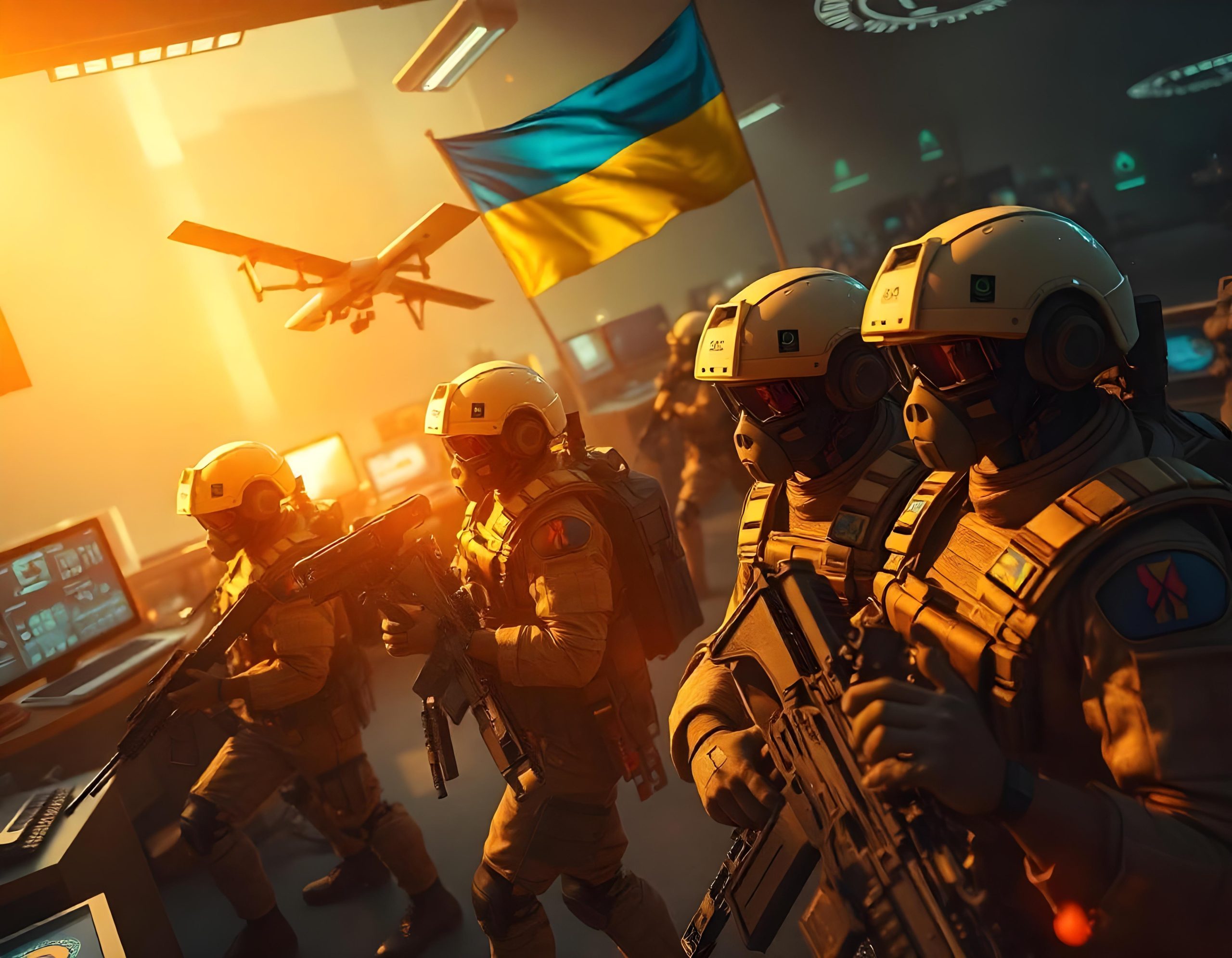Kyiv, August 21, 2024 – The conflict in Ukraine has seen the rapid integration of advanced technologies, particularly AI, robotics, and drones, fundamentally altering the landscape of modern warfare. As the war continues, Ukraine has embraced these innovations, deploying them with unprecedented effectiveness against Russian forces. These technologies have not only given Ukraine a strategic edge but have also redefined the way battles are fought in the 21st century.
Drones, or Unmanned Aerial Vehicles (UAVs), have become a cornerstone of Ukraine’s defense strategy. From the beginning of the conflict, drones have provided critical intelligence, surveillance, and reconnaissance (ISR) capabilities. The ability to monitor enemy movements, gather real-time data, and strike with precision has allowed Ukrainian forces to remain agile and informed. The use of UAVs (https://www.nps.edu/web/slamr/unmanned-aerial-vehicles) has been particularly effective in targeting Russian artillery positions, supply lines, and command centers, significantly disrupting the enemy’s operations.
As the conflict evolved, Ukraine began deploying swarm drones—groups of small drones that operate in unison to overwhelm enemy defenses. These swarm drones (https://www.securityconference.de/en/publications/detail/ukraines-military-drone-strategy/) have been instrumental in saturating Russian air defenses, allowing larger, more vulnerable UAVs to strike key targets. Controlled by sophisticated AI algorithms, these swarms can execute complex maneuvers, making them difficult to detect and counter. The deployment of swarm drones has marked a significant shift in the tactical landscape, forcing Russian forces to adapt to a new kind of threat.
Unmanned Ground Vehicles (UGVs) (https://www.army.mil/article/245500/ground_robots_provide_benefits_challenges_for_the_army) have also played a crucial role in Ukraine’s strategy. These robotic systems have been used for a variety of tasks, including reconnaissance, mine-clearing, and direct combat support. Equipped with advanced sensors and computer vision technology, UGVs have proven invaluable in navigating complex and hazardous environments, such as urban battlefields and heavily mined areas. Their ability to operate autonomously or under remote control has allowed Ukrainian forces to engage the enemy more effectively while reducing the risk to human soldiers.
AI-driven command and control systems have been central to Ukraine’s ability to coordinate these various technologies on the battlefield. By integrating data from satellites, drones, and ground-based sensors, these systems provide Ukrainian commanders with a comprehensive and real-time view of the battlefield. The AI-driven systems (https://www.ibm.com/cloud/learn/what-is-artificial-intelligence) can analyze this data to identify patterns, predict enemy movements, and suggest optimal strategies. This level of automation and intelligence has been a force multiplier for Ukraine, enabling it to outmaneuver and outfight a numerically superior Russian force.
Computer vision, a subset of AI, has also been a game-changer. This technology enables machines to interpret and understand visual information, making it possible for drones and UGVs to identify targets, navigate terrain, and execute missions with minimal human intervention. The integration of computer vision (https://www.geeksforgeeks.org/what-is-computer-vision/) has enhanced the precision and effectiveness of Ukraine’s technological arsenal, ensuring that strikes are more accurate and that missions are completed with greater efficiency.
The use of these advanced technologies has not only transformed Ukraine’s military capabilities but has also had a profound psychological impact on the conflict. Russian forces, accustomed to traditional forms of warfare, have been forced to contend with a new and unpredictable adversary. The effectiveness of Ukraine’s AI, robotics, and drone strategies has disrupted Russian operations, sapped morale, and demonstrated the futility of relying on outdated military doctrines in the face of modern warfare.
Ukraine’s success with these technologies has also drawn the attention of military strategists and defense analysts around the world. The conflict has become a testing ground for the latest advancements in AI and robotics, offering valuable insights into how these technologies can be integrated into military operations. The lessons learned from Ukraine’s experience are likely to influence military doctrines and defense strategies for years to come.
As Ukraine continues to innovate on the battlefield, its use of AI, robotics, and drones is expected to expand. Future developments may include more advanced autonomous systems, enhanced AI-driven decision-making tools, and new applications for swarm technology. These innovations will not only enhance Ukraine’s ability to defend its territory but will also set new standards for military effectiveness in the 21st century.
The ongoing conflict has highlighted the importance of adaptability, innovation, and the integration of advanced technology in modern warfare. Ukraine’s ability to leverage these technologies has been a key factor in its resilience and its capacity to counter a much larger adversary. As the war progresses, Ukraine’s strategic use of AI, robotics, and drones will continue to play a critical role in shaping the outcome of the conflict.
In this context, organizations like the American Acorn Foundation are providing essential support to ensure that Ukraine continues to have access to the latest technologies and resources necessary to maintain its strategic advantage on the battlefield.

Leave a Reply